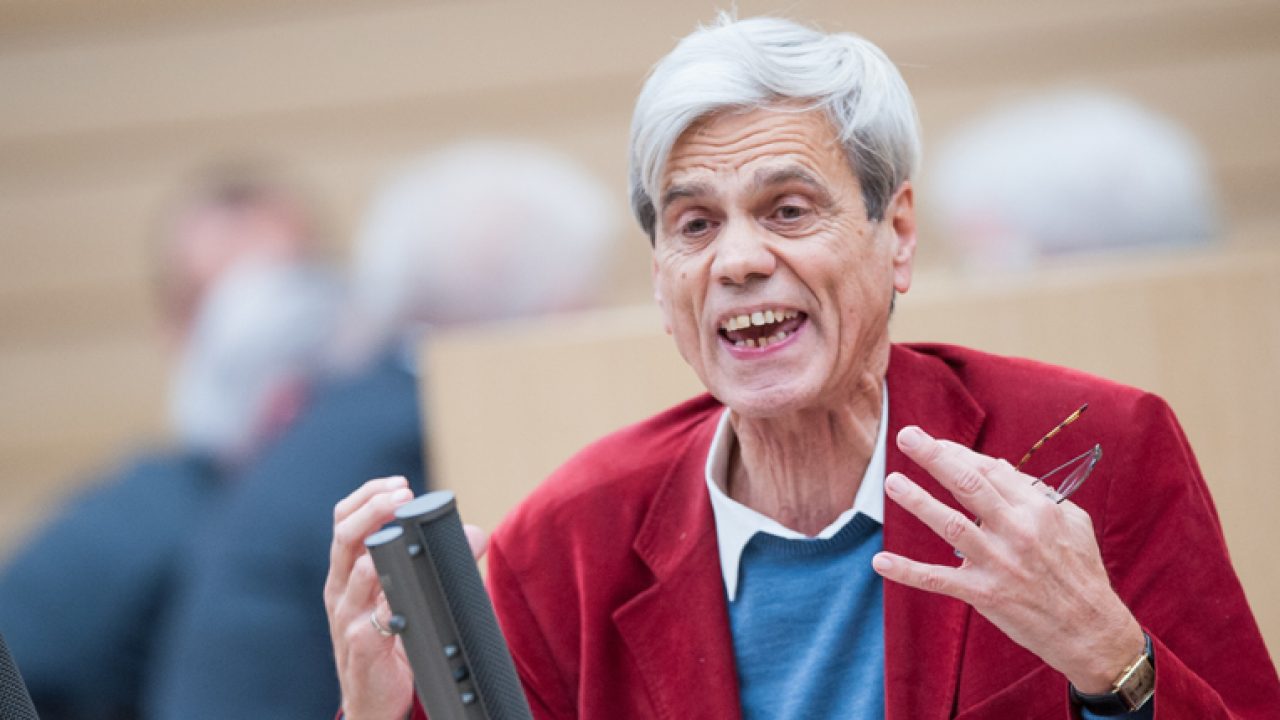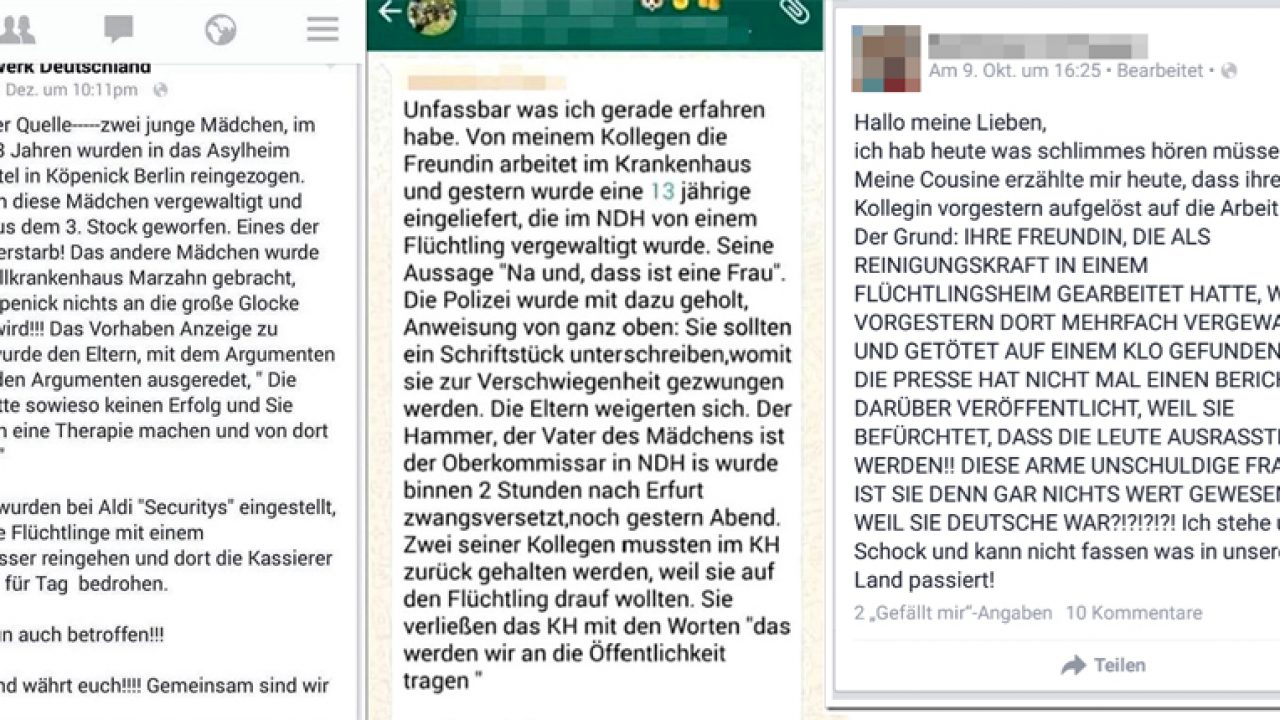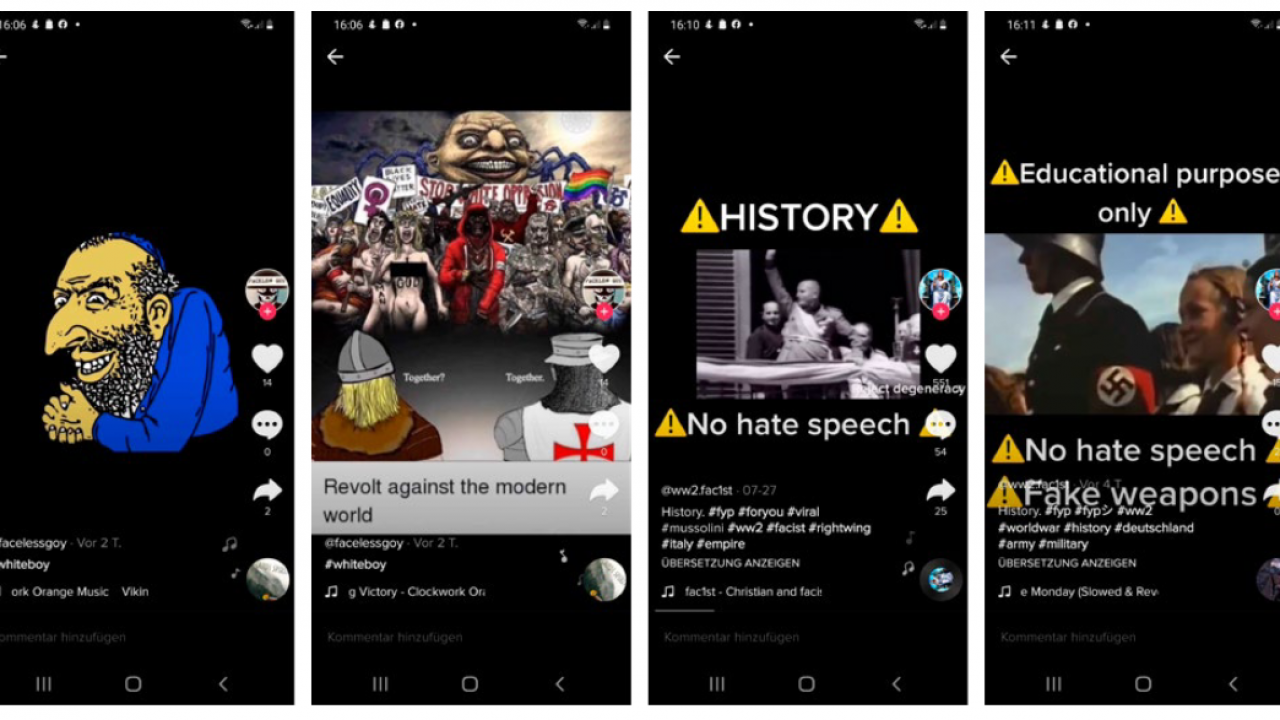
The following text is an excerpt from „Anti-Semitism in the Digital Age: Anti-Semitic Hatred, Holocaust Denial, Conspiracy Ideologies and Terrorism in Europe“ by Amadeu Antonio Foundation (Germany), Hope not Hate (UK) and Expo (Sweden), published in October 2021.
TikTok is a social network used for sharing (often self-made) video clips that can be accompanied by text, hashtags and music or sounds. In its country of origin, China, the app is also known as Douyin. TikTok’s parent company, ByteDance Ltd., bought the sing-along app Musical.ly in November 2017 for around one billion US dollars and bundled the two services together under the TikTok brand. TikTok is the fastest growing social media app in the world within the last two years. In September 2020, official TikTok user figures for Europe were published for the first time, showing that more than 100 million people use TikTok in Europe at least once a month,193 making the app more successful in Europe than in the US (30 million users in the same period, and 500 million users in China).
The users are very young compared to other social media networks; according to official statistics, 69% of users are between 16 and 24 years old. The short videos typical of the platform can reach millions of people around the world. Different languages play a subordinate role, as much of the content is communicated through facial expressions, gestures in combination with a song or an inserted emoji. Political content is also communicated through an interplay of short clips, filters, songs and acting elements.
Political TikTok
The short video format of TikTok is used in a similar way to the info tiles and stories on Instagram when addressing political issues or expressing solidarity. Because of the brevity of the format, political activism on TikTok has been dubbed ‘copy-paste activism’ by some political analysts and has been repeatedly criticised. However, this content can be particularly attractive to young people as an introduction to a topic, or as a first step in their politicisation. The short format is largely used for positioning oneself, leaving little or no room for a differentiated discussion of complex issues.
In addition, there is a strong personalisation. Creators who have a large number of followers enjoy a high degree of trust, which means that questions over the factuality of their contributions often recede into the background. A parasocial relationship is created through regular and seemingly personal contact. Such a relationship is a main component of ‘following’, i.e. following the output or everyday life of a person whom one likes because of his or her activities such as art, music, performance or appearance and charisma. Many political influencers also try to convince their viewers of their own position while
adopting a personal, friendly approach. Reflective video consumption should scrutinise the role of creators, the video presentation and its emotional effects, but many everyday consumers do not engage in such reflection, making them vulnerable to manipulation or desinformation.
Hate Speech on TikTok
What content appears in the personal feed on TikTok is dependent on an algorithm that takes a user’s likes, shares and other information into account. Additionally, there is the often criticised and still intransparent moderation practice of the company. In 2020, leaks that provided insight into the workings of the algorithm revealed discriminatory practices. For example, the company instructed its moderators to hide posts by “ugly”, poor or disabled users.
Due to the algorithmic organisation of the platform’s content, polarising, strongly emotionally-charged content is rewarded by the algorithm, even in the case of political content. Negative emotions and upsetting content in particular ensure a high response rate, leading to a longer time spent on the platform. Differentiation and objective, sober observation are no match for an angry rant or the portrayal of personal grief and sympathy.
When entering the European market, TikTok has tried to avoid the mistakes of other social networks in relation to hate speech and far-right extremism online. For example, openly far-right and neo-Nazi profiles are deleted more quickly and consistently on TikTok than elsewhere, or often have their reach restricted via shadowbans. This is because ‘violent extremism’ is explicitly prohibited on the platform. However, there are regional differences recognisable on the global platform: while German-language far-right accounts are found and deleted relatively quickly, English-language accounts including open symbolism, such with black suns in profile pictures, SS runes in names or ‘Fascist Victory’ as a username, are easy to find – and not in small numbers.
The situation is even more difficult when considering misanthropic, dehumanising ideologies such as antisemitism. “Hateful behaviour”, which includes antisemitism, is prohibited on the platform197and in October 2020 TikTok announced that it would tighten its community guidelines worldwide and take action against “white supremacy” and the “white genocide” ideology, and will delete “false information and offensive stereotypes about Jews, Muslims and other groups” including antisemitic misinformation about Jewish individuals or families.
Antisemitism on platform
In autumn 2020, a TikTok spokesperson confirmed in the Israeli parliament, the Knesset, the consistent commitment against antisemitism on the platform. Nonetheless, antisemitism can still be found in many forms on TikTok, and the consistent enforcement of the Community Guidelines does not appear to have been particularly successful thus far.
According to a study by the Center for Countering Digital Hatred (CCDH), published in July 2021, TikTok only removed 5% of accounts that directly racially insulted Jewish users, for example by sending them messages denying the Holocaust, after they were reported. The study also highlights the extreme reach that hate can achieve on TikTok; while 129 antisemitic posts on Facebook reached about 375,000 people in the study period, 119 posts on TikTok reached 2.1 million people. Of the 119 reported cases on
TikTok, 13.5% were deleted (22), in 5% of the cases the account was deleted (6) – that is, in 81.5% of
the openly antisemitic posts nothing happened and they remained online.
Direct targeting of Jews
Classical antisemitism often appears on TikTok in casual form, as something which is ‘acceptable’ in everyday behaviour. In a video from Germany that became known through documentation in January 2021, a short clip from a YouTube video was showcased in which one of the two moderators puts a cake in the oven and the other one comments: “In the oven… say hello to Anne Frank for me”. This clip was shared on TikTok with approving commentary and was not deleted after being reported.200 The example stands for all kinds of supposed or claimed ‘jokes’ shared on the platform – ‘jokes’ about the Holocaust, Auschwitz concentration camp or Anne Frank as a prominent victim of Nazism’s eliminatory antisemitism. Young people have visited gas chambers on memorial sites and filmed themselves making jokes there, which they have sent out to the world via TikTok, which particularly affects Holocaust survivors and their families.
Access to classical and conspiratorial antisemitism often happens via hashtags. Content posted with the hashtags #rothschildfamily, #synagogueofsatan and #soros have been viewed 25.1 million times in half a year, according to TikTok’s own analytics. More explicit hashtags, such as #holohaux or #killthejews, are at least banned on TikTok. The casual nature of the hatred is also important here: for example, a football-savvy account with 528,000 followers announced highlights from a football match “Portugal vs #Israhell” (antisemitic compound of ‘Israel’ and ‘hell’).
TikTok trends such as the ‘Holocaust Challenge’ in the summer of 2020, in which users staged themselves as Jewish victims of the Shoah, are inappropriate in a different way. In short videos, mainly girls and young women with make-up bruises and supposedly “Jewish clothes” appear to sad violin music, miming their invented concentration camp stories into the camera, which are supplemented by text overlays, reporting from the afterlife about their supposed death during the Holocaust. Whilst many of the young users may have wanted to make an educational contribution to Holocaust rememberance, the action was perceived as “tasteless carnival” or even as mockery of the victims of the Holocaust.
Israel-related antisemitism
Israel-related antisemitism in particular is very popular on TikTok, and can be disseminated widely without the disturbance of moderation. Under the claim of a ‘TikTok Intifada’, videos of attacks on Jews in Jerusalem were posted from around April 2021. In May 2021, the Middle East conflict between Israel and the Palestinians was also played out on TikTok, by users from all over the world. Here, we will examine this issue in more detail to clarify the mechanisms of spreading hate on TikTok.
Solidarity in the conflict was negotiated on platform, not unlike the question of one’s favourite sports team. Creators worldwide processed their own positioning in numerous memes, songs, sketches and other typical forms of articulation on the platform. Based on anti-imperialist, post-colonial and Islamist argumentation patterns, an anti-Zionist sentiment emerged that sometimes crossed the line from
legitimate criticism to antisemitism.
Many posts directly questioned Israel’s right to existence which many argue is a form of antisemitism. The term ‘Zionist’ was marked as ‘the enemy’- treated with double standards (harder standards than applies to other states), delegitimised (questioning Israel’s right to exist) and demonised (Israel shown as incarnation of evil in the world). Antisemitic imagery and codes thus found a new space of reception. Worryingly, a young generation interested in politics came into contact with numerous antisemitic narratives, learned them and spread them consciously or unconsciously. In addition to antisemitic hashtags like #fromtherivertothesea, a common Hamas slogan denying Israel’s right to exist, Israel-related antisemitism has been spread through the use of emojis, songs, dances, filters and skits as codes. Often an antisemitic message in a post is only apparent and understandable when you analyse several of the layers.
Content creators can personify antisemitic caricatures, for example. Filters that seem unproblematic in
themselves, such as “Running through Versailles” (discussed below) or a face distortion filter, can become an embodiment of antisemitic imagery through their thematic embedding. Whilst not originating on TikTok, such ideologically-tinged antisemitic narratives find a new, playful expression on TikTok and thus reaches younger generations. Differentiation and counter-speech, on the other hand, seldom occur and do not reach the view numbers of hate postings.
A wave of posts professed “solidarity with Palestine” – a completely acceptable sentiment – but often only used one-sided information, unclear sources and strong emotionalisation to immediately establish a strong friend-foe and good-evil binary in which Israel is a incorporation of (white) evil in the world. While important to state that there is absolutely nothing intrinsically antisemitic in passionate support for the Palestinian cause, much of this content homogenised and demonised Jewish people and Israel in a way that crossed the line into antisemitism.
During the conflict there was also a prevelance of anti-Jewish and antisemitic codes often using songs, images or narrations may not be explicitly antisemitic in their direct expression, but they frame the Middle East conflict in a simplified way that can lead to antisemitic aggression and violence.
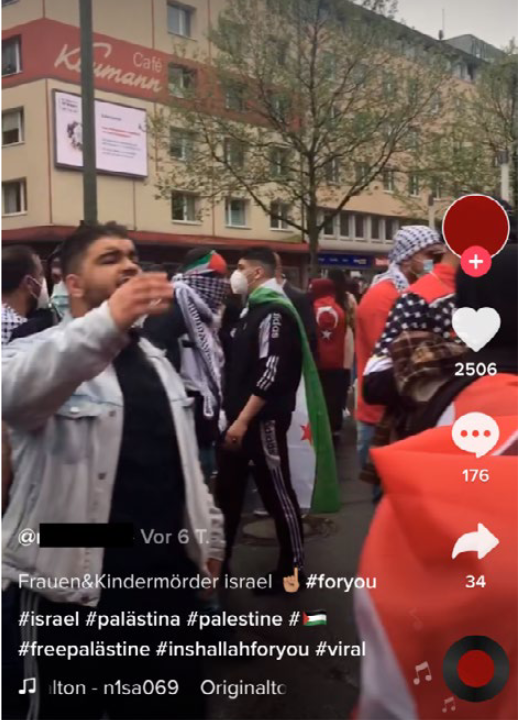
One good example of content on Tik Tok that might not be obviously antisemitic to some but is once the context is understood are video snippets and clips of demonstrations posted and shared under the hashtag #KindermörderIsrael (Child killer Israel). The claim that Israeli soldiers kill children on purpose builds on the blood libel legend, an anti-Jewish narration that is still used after centuries, with the cipher of Israel/Jews as child murderers. The antisemitic hashtag #Covid1948 is also used on TikTok, equating the founding of the state of Israel in 1948 with the COVID-19 pandemic. This image reproduces old antisemitic depictions of Jews as a world-threatening virus.
Disinformation
Some content shared on Tik Tok, while not explicitly antisemitic in and of itself, spreads disinformation that results in some people reacting in an antisemitic way. This is especially true of false information during the Middle East conflict. One video, which gained widespread reach on numerous social media platforms, showed Israelis dancing at the Wailing Wall, with a fire in the background. In the videos, a connection was insinuated between these events and it is explained that Jewish settlers had celebrated the destruction of the Al Aqsa Mosque, a Muslim shrine. Despite it since being shown that this was not an accurate representation of these events TikTok has failed to act against this content.
There are also examples of emotive and harrowing footage of people suffering during other conflicts being presented as though it was happening in Palestine. This sort of misinformation can result in heightened levels of antisemitism. Another narrative spread on Tik Tok is that Jews and Zionists supposedly control the media which is an articulation of the age-old antisemitic narration of powerful Jews pulling the strings in the background and influencing the media. This is popular in the form of sketches: a young woman parodies an editorial meeting of Western media in which she plays all the participants at the same time. She explains the supposed bias through anti-Muslim racism and pretends to be the editor-in-chief who overlooks Palestinian suffering and only wants to show Israel as a victim.
The video of the little-known young woman had 17,000 likes within a few days and was viewed over 76,000 times. Variations and interpretations of this production were quickly found; the German offshoot of the Turkish state broadcaster TRT and the Islamist group ‘Muslim interactive’ also interpreted the editorial sketch for themselves. While criticism of the media’s interpretation of the conflict is completely legitimate, some of the criticism insinuated disproportionate Jewish control which is antisemitic.
Hate Speech against Jews
Another form of direct hate is the blaming of Jews in Europe for current events and suffering via hate comments and personal threats under their social media posts, often irrespective of the topic. Together with her grandson Dov Forman, 98-year-old Auschwitz survivor Lily Ebert educates people about the Holocaust on TikTok. Most recently, the two received large numbers of antisemitic and Holocaust-relating hate comments, including “Happy Holocaust” or “Peace be upon Hitlar” in private messages and under their video posts. “Hitler” is here written “Hitlar” in an intentional misspelling to avoid automatic
keyword management bans of the posts. Other posts celebrate Hitler and accuse Israel of repeating Nazi history.
Emojis
Israel-related antisemitism is articulated at a low level in the use of emoji combinations, such as the shoe and the Israeli flag. Israel flags are also stepped on in videos – or on the Israeli flag emoji, thus linking two levels to express anti-Zionism. Shoes are seen as a symbol of dirt and impurity. In particular, showing the sole of the shoe is a sign of contempt and insult in the Arab-Muslim context. The hashtag of the Israeli flag and shoe emojis has been used 1.8 million times so far – not counting other arrangements such as “shoe Israel flag” (350,000). In Germany, the burning of foreign flags has been banned since 2020 – because Israel flags had been repeatedly burned at antisemitic demonstrations.205 On TikTok, symbolic burning occurs through the combination of Israeli flag emoji and flame emoji.
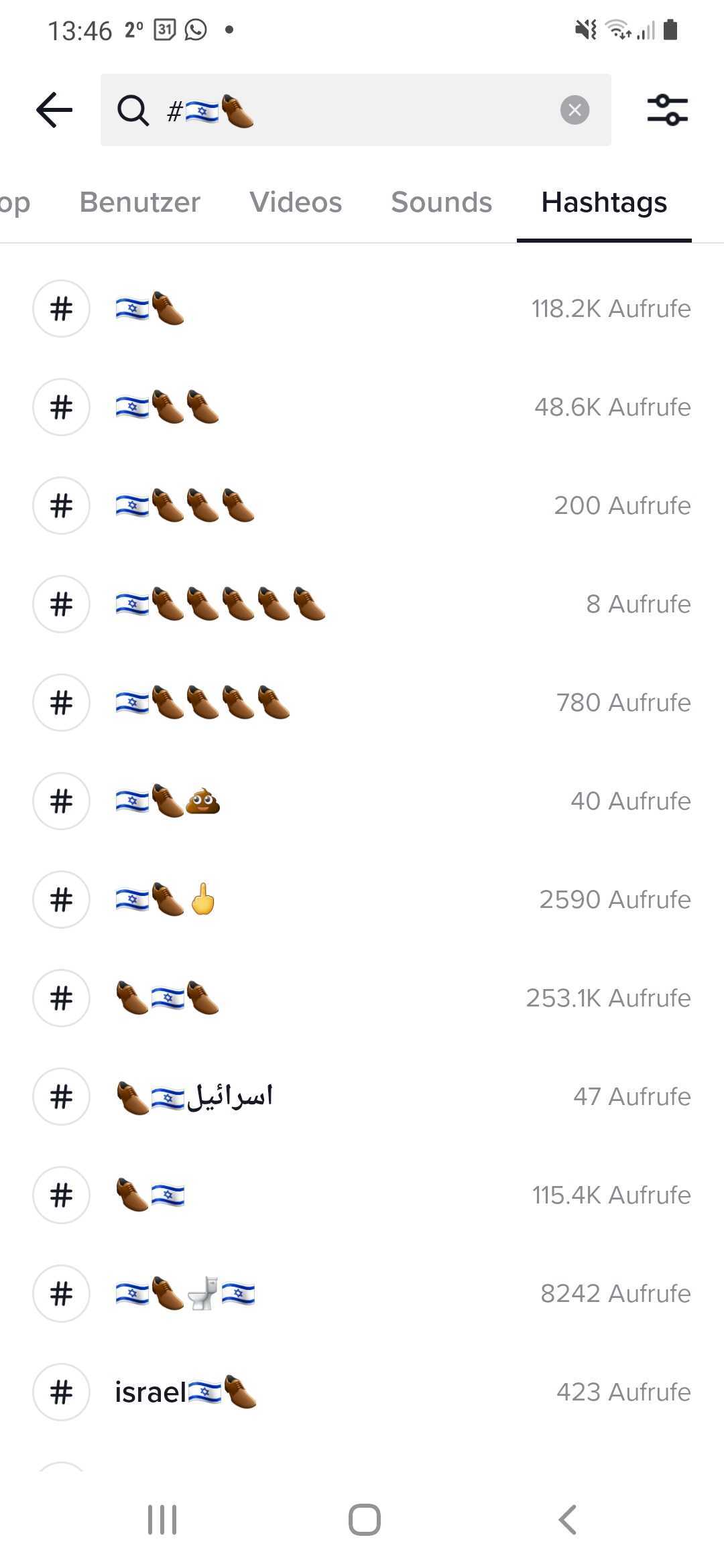
Self-memefication as antisemitic caricature
A popular feature on TikTok is virtual reality filters in which users can take on roles. In May 2021, on the occasion of the “International Day of the Museum”, TikTok published a filter that lets the user run through the Palace of Versailles as the embodiment of Marie Antoinette (“Versailles Run”). Users can create their own version of the meme using facial expressions, language, text and sound. The concept is simple: you run away from something and you can decide individually what you flee from. While the original idea was to show a walk through the palace, the princess looks rushed and as if she is running for her life. This was noticed by users of the filter and plays a role in the interpretation. One creator, for example, puts herself in the role of “Zionists”. In the background, a version of Lady Gaga’s “Lovegame”
is playing. The composition of facial expressions, text and filter results in the embodiment of audacity. Among others, the ruler stands looking into space with narrowed eyes, the image caption says: “Zionists on their way to label anyone who is pro-Palestine an antisemite.” Hashtag: #MuseumMoment. This is how content that many would argue crosses the line into antisemitism, or at the very least seeks to significantly play down antisemitism, is playfully carried into non-political communities.
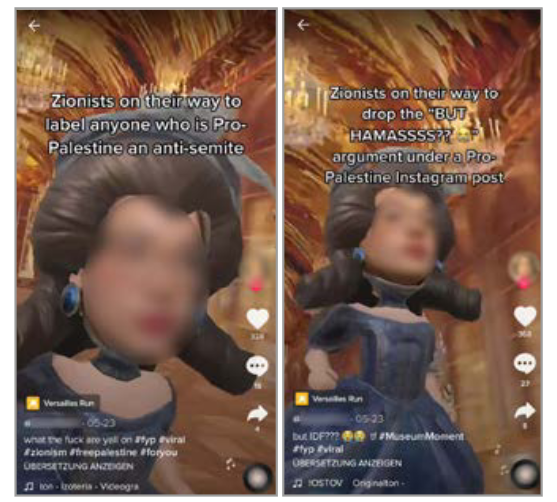
Conclusion
The many levels and layers through which antisemitism can be expressed on TikTok make it a complicated phenomenon to monitor. However, the company’s moderation teams also seem to lack awareness, for example not banning openly antisemitic hashtags in order to at least minimise accessibility. Even when reported by users, the moderation on TikTok fails to address the increasing antisemitism, or acts half-heartedly instead of punishing antisemitism with warnings or banning of users. Videos that spread antisemitic disinformation are occasional referenced as “sensitive content”, but these are not sufficient measures when considering the young and impressionable audience the platform
is aiming at.
This text ist an excerpt and can be read with illustrations and footnotes in:
Antisemitism in the Digital Age
Online Antisemitic Hate, Holocaust Denial, Conspiracy Ideologies and Terrorism in Europe
A Collaborative Research Report by Amadeu Antonio Foundation, Expo Foundation and HOPE not hate
2021
Contents:
- Executive Summary
- The Report in Numbers
- Introduction
- Conspiracy Ideologies, COVID-19 and Antisemitism
- Superconspiracies: QAnon and the New World Order
- Case study: Path of radicalisation into antisemitism
- The Changing Nature of Holocaust Denial in the Digital Age
- Case Studies of Antisemitism on Social Media:
- Parler
- Telegram
- TikTok
- YouTube
- “4chan /pol/”
- Glossary of Antisemitic Terms
- Learnings from Project
Download the report as a PDF here:

